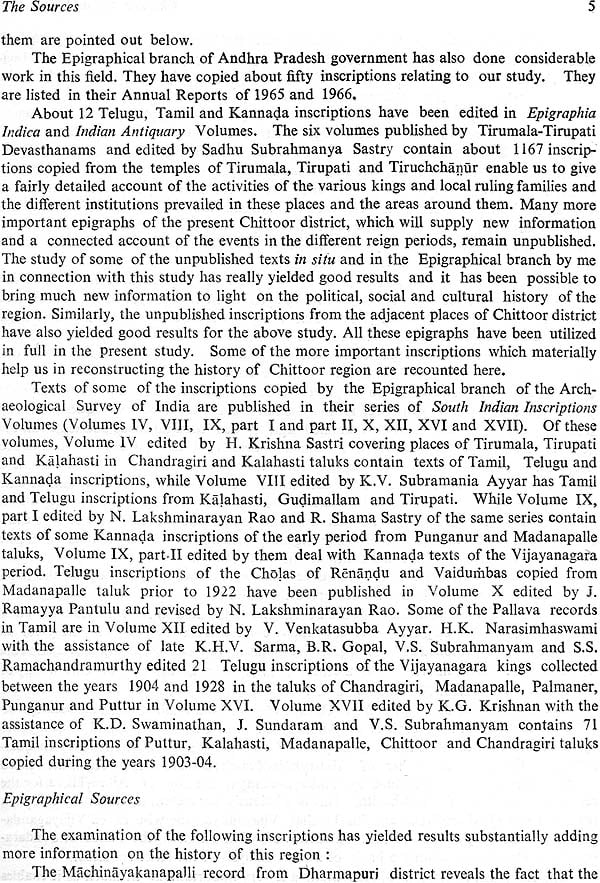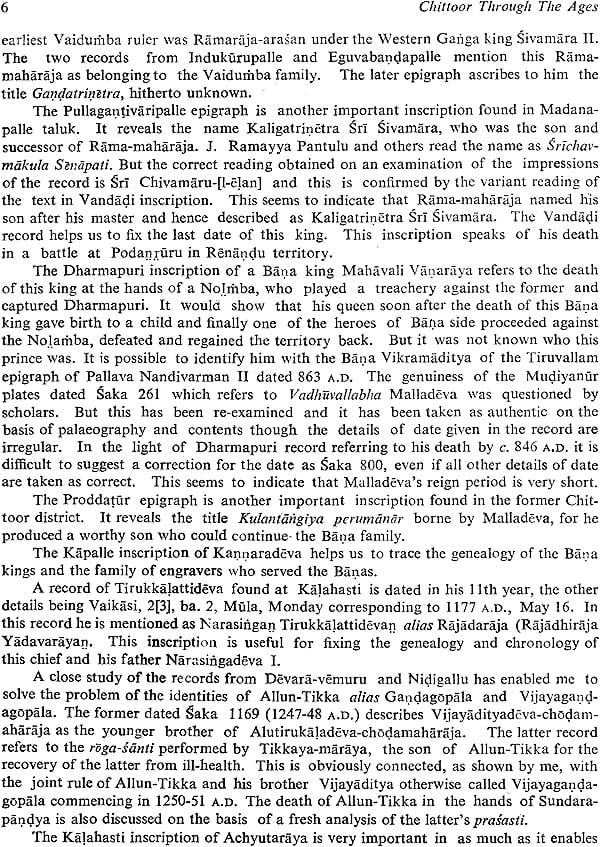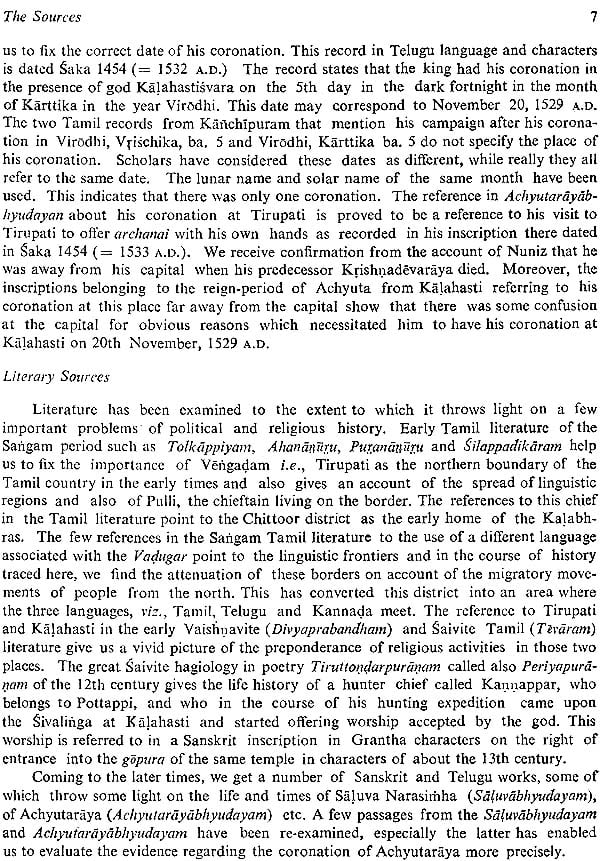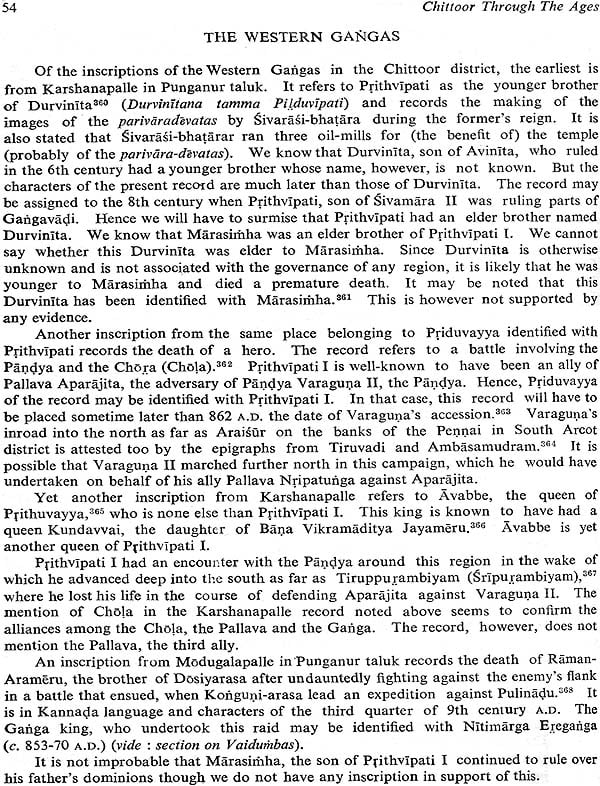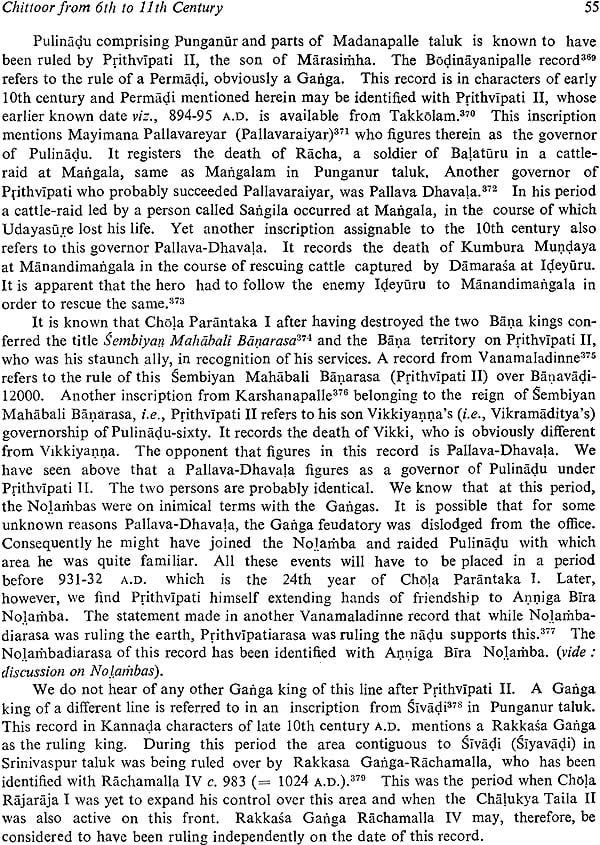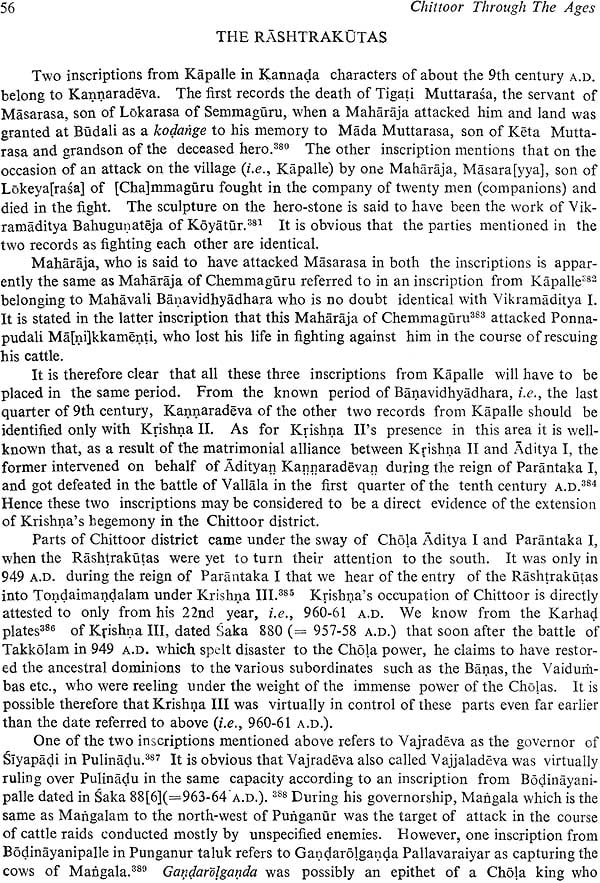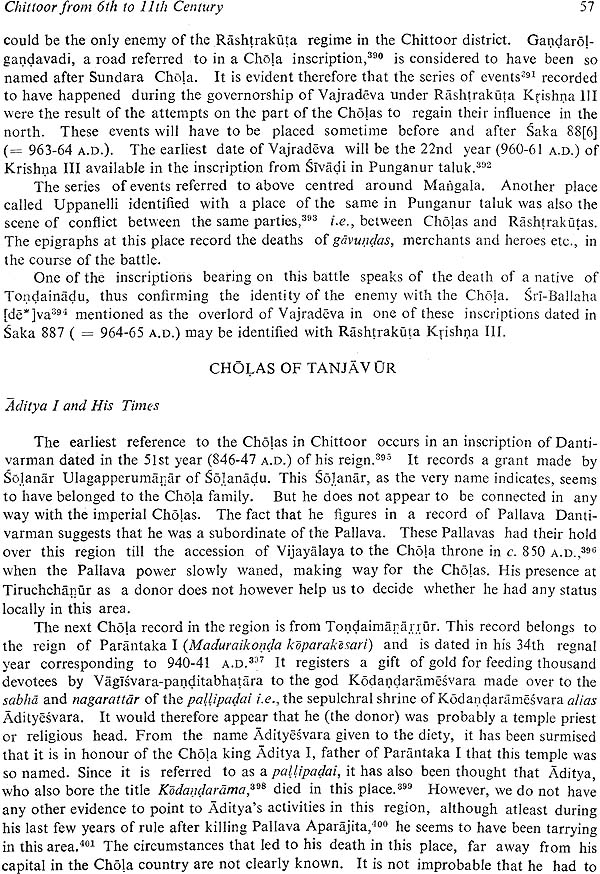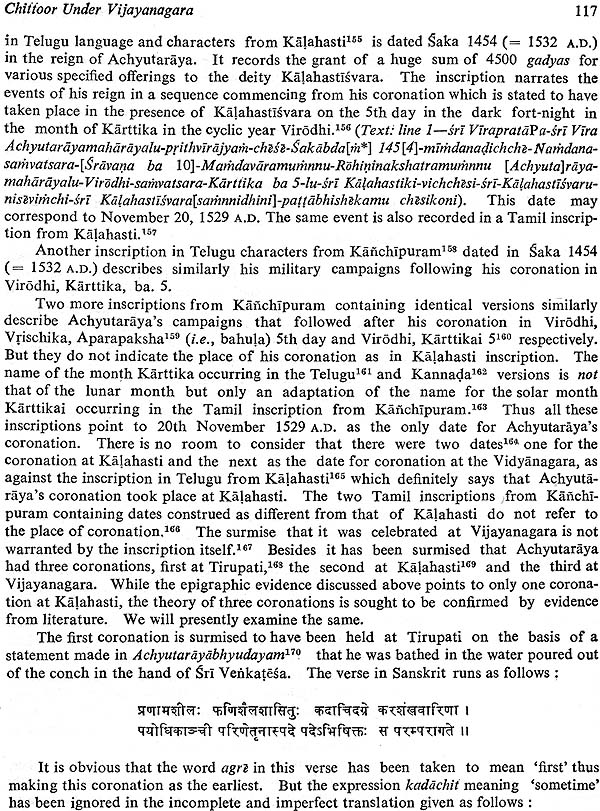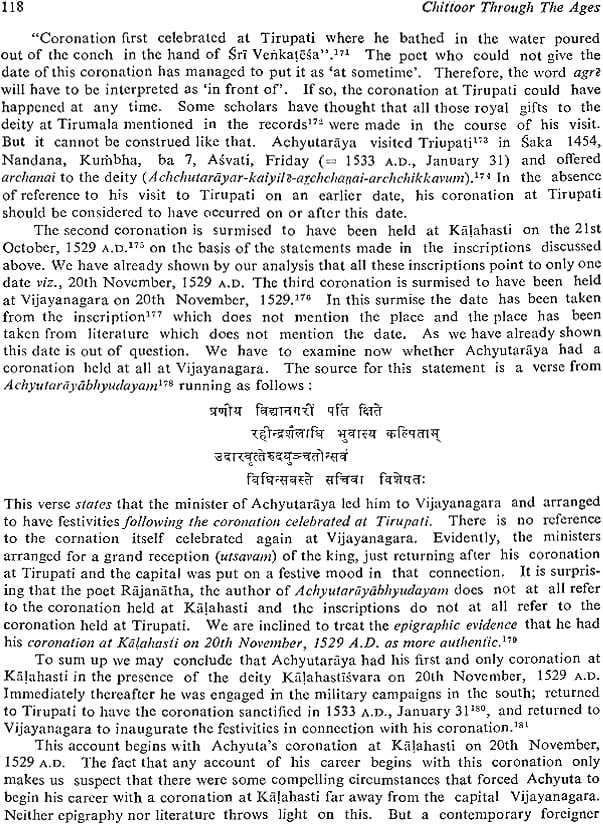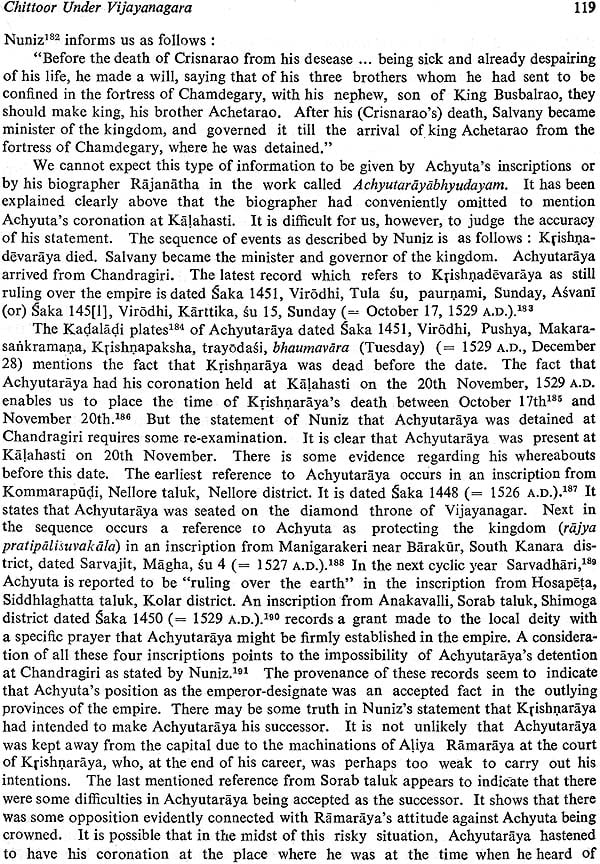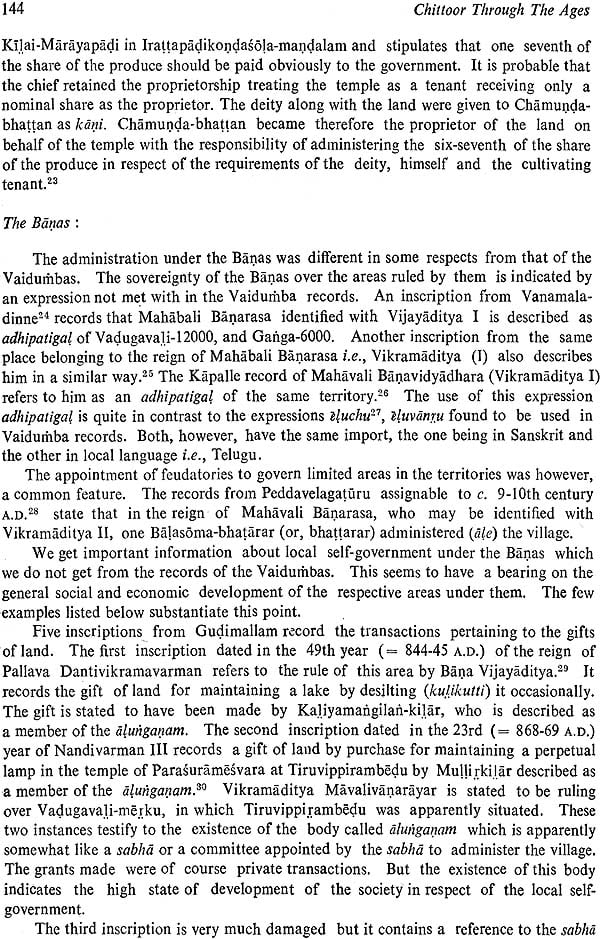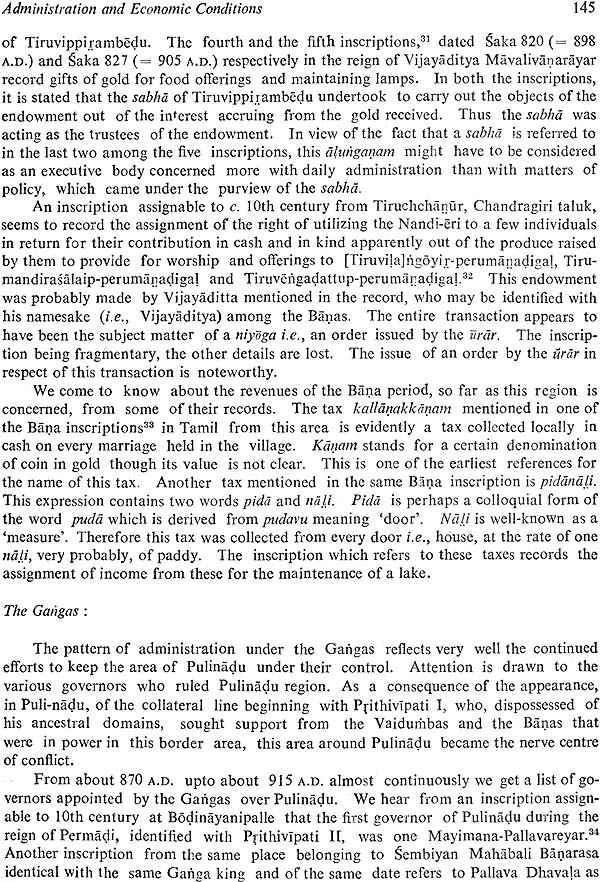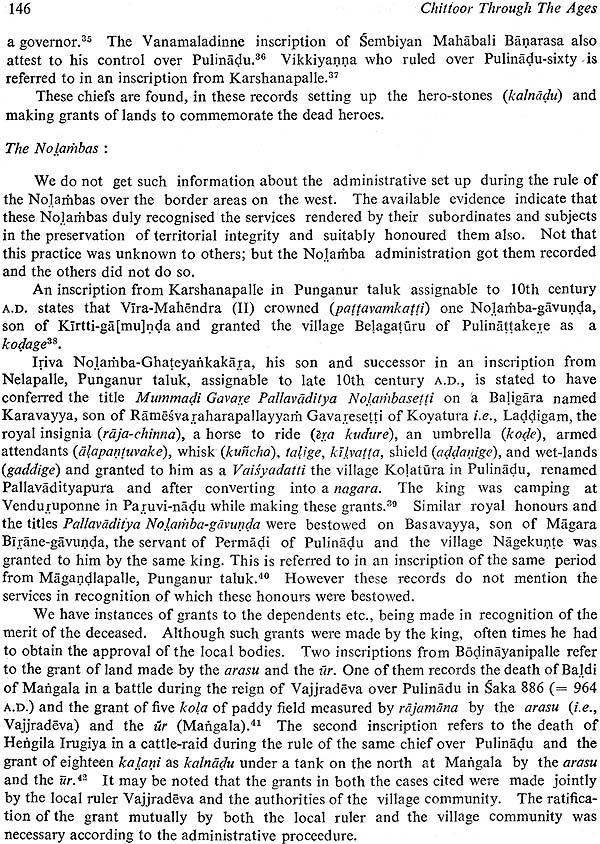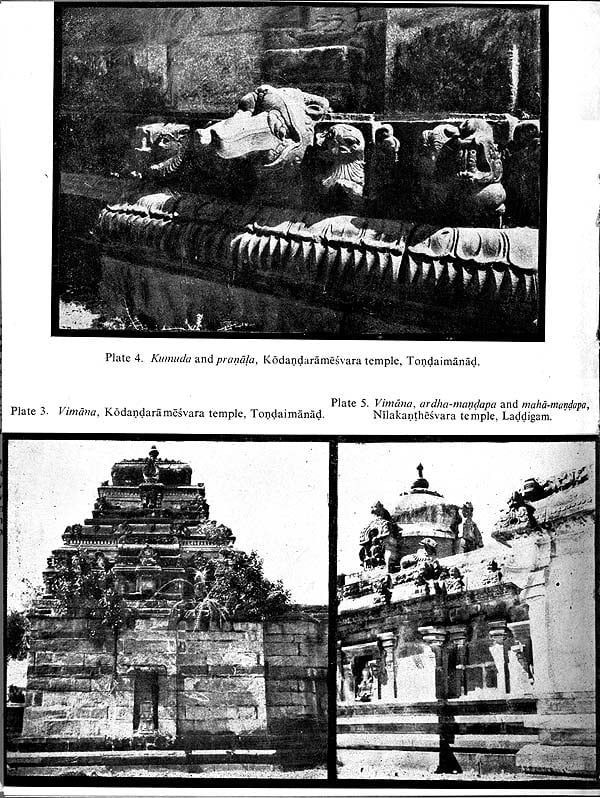
Chittoor Through The Ages (An Old and Rare Book)
Book Specification
| Item Code: | NAL707 |
| Author: | M.D. Sampath |
| Publisher: | B.R. Publishing Corporation |
| Language: | English |
| Edition: | 1980 |
| Pages: | 308 (49 B/W Illustrations) |
| Cover: | Hardcover |
| Other Details | 9.5 inch x 7.0 inch |
| Weight | 750 gm |
Book Description
Chittoor in ancient times was a cultural trijunction. Its history has been drawn up from its own political, cultural and linguistic features uniquely supported by authentic source materials.
The study of regional history has become a necessity to understand the exciting periods of India’s political history. In that way the study of the present work has made great contributions. The changing political vicissitudes of this region from 6th to 10th centuries which has been studied in greater depth on the basis of epigraphical source materials was a long desideratum. The part played by the various ruling families viz., the Vaidumbas, the Banas, the Western Gangas, the Nolambas and such others in the different battles finally resulting in the Soremati battle and the frequent change of suzerainty of this period to muster the army in times of crisis well reflected through their various epigraphs is here laid out with singular clarity. Various cobwebs of political and cultural history of the early period and of the subsequent periods stretching from the time of Parantaka I to the time of Vijayanagara occupation of this area which was rather smooth have been cleared and the imperial position of the Chittoor region in the heyday of Vijayanagara supremacy has been high-lighted. The stress has been made on the date of coronation of Achyutaraya focusing the details from Achyutarayabhyudayam and correlating it with epigraphic references.
An attempt has been made to draw the genealogy of various ruling chieftains of this region. Chittoor region as the meeting point of cultural streams is well-nigh discernible through its trilingual conflation which is not only limited to the language of the inscriptions, the literary forms and styles used there in but to the different art and architectural types existing in this area.
Mamandoor Mudimbi Doraiswamy Sampath after completing his school education in the Hindu Theological High School, had his graduation from the Vivekananda College at Madras. Later he got his Masters Degree in Ancient History and Archaeology from the University Post- graduate Department of the Madras University in 1964. He obtained the Post- graduate Diplomas from the same University in the subjects like, Geography, Anthropology and Sanskrit. In 1976, he was awarded the Ph.D. degree by the Karnatak University at Dharwar for his thesis ‘Chittoor Through The Ages.’ Dr. Sampath has been in the field of Epigraphy and Archaeology since 1964 and as Epigraphist since 1966. He had the distinction of serving as the first epigraphist in the Archaeological Department of Government of Madras in 1966-67. He became an Epigraphist and Archaeologist of the Institute Francais D’ Indologie in 1969 and continued as such till 1972. From 1973 he worked as Epigraphical Assistant in the Revision and Reprint of Epigraphia Carnatica Project of the Institute of Kannada Studies, University of Mysore and assisted in editing a number of Kannada, Telugu and Tamil inscriptions for the Epigraphia Carnatica Volumes and served the eminent Epigraphist Dr. B.R. Goyal and the Director of the Institute, Dr. H.M. Nayak. He was a member of the team of Archaeologists of the University Department of Ancient History and Archaeology, Madras who conducted excavations at Alagarai. He has also participated in the excavations at the Neolithic site at Paiyampalli under the guidance of Sri S.R. Rao, Superintending Archaeologist, Archaeological Survey of India and the exploration of Chandrapura a similar site and others along with Dr. B. Narasimiah. He participated and organised the Seminar on Epigraphy, and exhibitions of Second International Tamil Conference held at Madras in 1968 and other cultural Exhibition organised by the State Archaeology Department, Government of Madras. He was the editor of prof. K.A.Nilakantasastri Felicitation Volume. He has presented research papers in various conferences and contributed research articles to reputed journals like Epigraphia Indica and others. Dr. Sampath has been serving as Deputy Superintending Epigraphist for Dravidian Inscriptions of the Epigraphy branch of Archaeological Survey of India, Mysore since 1976. He had the opportunity of receiving training under eminent epigraphists like Sri K.G. Krishnan, Dr. B.R. Gopal, Dr. R. Nagaswamy , DR. K.V. Ramesh and Pandit V.S. Subrahmanyam.
This book is the result of my work on “Chittoor Through The Ages” submitted to the Karnatak University, Dharwar in 1974 for the Ph.D., Degree. It has been revised in parts. In the preparation of this thesis, I have received considerable assistance from a number of persons. It is with great and whole hearted pleasure that I acknowledge the help received for this study.
First and foremost, I should pay my humble respects to late Dr. P.B. Desai, Professor and Head of the Department of Ancient Indian History and Culture and Director, Kannada Research Institute, Karnatak University, Dharwar who was kind enough to accept me as one of his research students. It is after a good deal of discussion with him that I finally decided upon the present subject. But for his encouragement I would not have probably completed this work. It is my misfortune that he passed away before seeing this work in the present form. Dr. S.H. Ritti who succeeded Dr. P.B. Desai as Professor of Ancient History and Epigraphy willingly agreed to guide me when after Dr. Desai’s demise I had given up my hopes of seeing this through. He has been a source of inspiration. He has gone through the manuscript and revised it and given it the final shape.
I can never have done this job but for the great assistance given to me by Sri K.G. Krishnan, Chief Epigraphist, Mysore, Dr. B.R. Gopal, Epigraphist, Institute of Kannada Studies, Mysore and Sri Pandit V.S. Subrahmanyam, Retd. Senior Epigraphical Assistant, Mysore. I owe them more than I can easily express.
Dr. K.V. Ramesh, Superintending Epigraphist, Mysore helped me in reading some of the Kannada records of the region and by correcting the manuscript in the early stages.
Dr. G.S. Gai, Retd. Chief Epigraphist, office of the Chief Epigraphist, Mysore was very generous in permitting me to consult hundreds of inscriptions that are preserved in his office and to consult the books in the precious library of his office .
I am really indebted to Dr. H.M. Nayak, Director, Institute of Kannada Studies, Mysore for having kindly permitted and encouraged me to continue my research when I was serving under him.
I am grateful to Sri K.V. Soundara Rajan, Director, Archaeological Survey of India, Madras, Sri H. Sarkar, Director, Archaeological Survey of India and Dr. K.V. Raman, Professor of Ancient History and Archaeology, University of Madras for valuable suggestions when I consulted them and the records of their office in the course of my study of the Art and Architecture of this region.
I am highly Thankful to Sir P.R. Srinivasan, Retd. Chief Epigraphist, Mysore, Dr. S. Sankaranarayanan, Sri Madhav N. Katti, Superintending Epigraphist, Dr. F.Gros, French Institute of Indology, Pondicherry, Dr. C.R. Srinivasan, Dr. S.S. Ramachandramurthy, Dr. S. Subramonia Iyer, Sri H. Subbanachar, Sri S. Srinivasan, Sri T.V. Gopalachari and Sri I. Kartikeya Sharma for their kind help in various ways.
I owe a special debt to Sri M. Thyagarajan, who accompanied me in my field study and taken photographs of the monuments of this region with accuracy and to Sri R. Venkatesan, who printed my photographs with great care and skill. It is a pleasure to thank Sri R.S. Desai for his timely help to recopy and print the photograph of a temple of the region. I wish to register my deep sense of gratitude to Sri P.Natarajan who typed my thesis with great zeal, painstaking care and neat execution.
The authorities of the Karnatak University kindly accorded permission to get the thesis published, for which I sincerely thank them.
Sir K.G. Krishnan, Chief Epigraphist, Mysore, was gracious enough to adorn the book by writing a weighty foreword.
Finally, I will be failing in my duty if I do not express my thanks to Director General, Archaeological Survey of India, New Delhi who permitted me to get my thesis published, to all the temple authorities in this region, authors for the reproduction of photographs, to my family members, my friends like Sri Anantharamu and other official for their whole hearted service.
The Treatise presented is proposed to delineate here the history of Chittoor in all its aspects from early traceable historic times down to 1600 A.D. Besides an account of the political vicissitudes of the district, it also includes a survey of administrative systems, economic conditions, society, religions, art and architecture.
The scope of the book extends over the region around Chittoor which has played a prominent role in the history of South India throughout the historical period. Situated in a strategic position flanked by the Kannada and the Tamil regions, the region provides good material in all the three languages- Telugu, Tamil and Kannada. Places like Tirupati, Kalahastri and Chandragiri of this region are well- known. There are many others which in different periods of history have played the role of capitals or provincial headquarters (like Chippili and Narayanavanam respectively). Many feudatory dynasties governed different territories in this region. It is for this reason that this region has been selected for a detailed study.
It must be said that all these years much work has been done on the dynastic history of south India. Many major dynasties likes the pallavas, Chalukyas of Vatapi, Kadambas, Rashtrakutas, Cholas, Chalukyas of Kalyana, Pandyas, Hoysalas, Seunas and Vijayanagara ruled over Peninsular India from early times till the 16th century. They have contributed much to the political, social and cultural growth of South India. Considerable research work has been done regarding the history of most of these dynasties in addition to their being treated in general works on the history of South India. But the minor feudatory dynasties which also contributed much to the cultural growth of our country have not so much attracted the attention of scholars, though some material is published here and there on only some families such as the Banas, Nolambas, Chalukyas of vemulavada, Telugu- Chodas, Yadavarayas, etc. Much less has been the study of different regions which in their own way made significant contribution to the history of our country. This will help us to know and assess the contributions made by the different regions to the growth of South Indian culture as a whole. It is from this point of view also that the Chittoor region has been taken up for study.
The region under study largely covers the present day Chittoor district in Andhra Pradesh bounded by the Nellore district for its major part on the east; by the Chingleput, Dharmapuri and North- Arcot districts of Tamilnadu on the south and south- west; by the Bangalore and Kolar districts of Karnatka on the west and Anantapur, Cuddapah districts on the north. It is, however, to be noted that the study cannot strictly be confined to the modern boundaries of the district since the area governed by different feudatory families and demarcation of the geographical units varied in different periods. As such, to make the study complete, the areas adjacent to the present district have also been included within the scope of the present study.
The middle part in this district is referred to as the Vengadam region in Ahananuru, a Sangan anthology of the early centuries of the Christian era. As early as in the middle of 2nd century A.D. Ptolemy, the Greek geographer, referred to this region by name of Aruvanoi. From about the second quarter of the seventh century to about the end of the 9th century this region was under minor ruling families, such as those of the Renandu Cholas, the Vaidumbas and the Banas. During this period, the western region of this district was included in the ancient divisions of Renandu -7000 and Vadugavali-merku or Vadugavaliyin-paduva and Manneyin- muda and Puli-nadu. Even when under the hegemony of the Cholas, the territorial bounds of the Pulinadu had come to be adjusted, the area itself being called by Perumbanappadi and thus included in either of the major territorial divisions Jayangondasola-mandalam and Rattapadikondasola-mandalam. We do get reference to the north- western areas being included in a bigger territorial division called Penugonda-marjavada from the Vijayanagara records of the Madanapalle taluk. The punganur territory also is said to have been in the division called Mulavay-rajya in the Vijayanagara inscriptions. The inscriptions of the other areas attest to the inclusion of a major portion of the division of Chandragiri-rajya during the later Vijayanagar times.
An interesting feature of this region is that it exhibits the influence of three different languages because of its situation in the immediate neighborhood of the Tamil and Kannada regions. For example, the Western Gangas extended their sway over the parts of this area as a consequence of which a considerable Kannada population came and settled here. This is testified by a good number of Kannada inscriptions in the Punganur-Madanapalle regions of this district. Such is the case with the Banas whose inscriptions in Kannada are available in the region of Punganur. Since a major area of the district was a part of the Pallava, Chola Kingdoms, the availability of Tamil records is only natural.
Because of its geographical situation it was inevitable that this region came under the influence of the major dynasties of the south. During the early period of history, from the 4th to the 9th centuries, almost the whole of the district was under the Pallavas. It then passed into the hands of their successors, the Cholas, some portions in the west being ceded to the Rashtrakutas. Then came the later Pandyas and Vijayanagara rulers successively under whom this region gained greater prominence.
Before the 11th century feudatory families such as the Vaidumbas, the Banas, the Gangas and the No lambas played their effective role in shaping the local events. But these feudatories were mostly active in the western areas. The picture reversed in the later centuries when we find the Yadavarayas and the Telugu-Chodas in the eastern parts being more active. In the 11th-13th centuries, the eastern part of the district was under the control of the Irungola, Uttamachola- Ganga, Adigaiman and Siyaganga chiefs.
A comprehensive study of the feudatory families of the Chittoor region has not so far been attempted by any scholar, though savants like Krishnaswami Ayyangar, Sadhu Subrahmanya Sastri, Vriddhagirisan, Veeraraghavachariar, Venkataramayya, Yashodadevi and Rama Rao have treated some individual families and places of historical significance. Hence in the present thesis places like Tirumala-Tirupati have not come into the purview.
The political scene kept on changing throughout the period under study because of the changes in the imperial dynasties. But the social and religious institutions continued to flourish unabated, art and architecture received impetus and language and literature developed. An attempt is made here to study all these aspects so far as this region is concerned utilizing all the available material.
Chapter two deals with the source material where in the nature and value of different types of sources are assessed and some important inscriptions of special significance to our study are reviewed.
The third chapter tries to trace the antiquity of the region and describes the conditions of the Sangam age and under the Satavahanas and the early Pallavas.
The political history of the region under the successive dynasties like the Pallavas of the Simhavishnu line, the Cholas, the Pandyas and the Vijayanagara rulers and their feudatory families, the Renandu Cholas, Vaidumbas, Banas, Western Gangas, Nolambas, Irungolas, Yadavarayas, Telugu-Chodas Uttamachola-Gangas, Adigaiman and Siyaganga Chiefs is dealt with in the next three chapters(i.e., Chapters IV,V and VI ).
Chapter seven deals with the features of administration from the Chronological and dynastic points of view and an attempt is made here to assess the economic conditions of the region.
The growth of social and religious institutions, epigraphical language and literature id dealt with in chapter eight.
The last chapter contains a study of the development of art and architecture. A few typical temple are selected for detailed study.
The appendix contains the texts and summaries of some important inscriptions bearing on the study.
| Foreword | ix | |
| Preface | xi | |
| System of Transliteration | xiii | |
| Abbreviation | xv | |
| List of Places | xvii | |
| 1 | Introduction | 1 |
| 2 | The Sources | 4 |
| 3 | The Early Period | 9 |
| 4 | Chittoor from 6th to 11th Century | 15 |
| 5 | Chittoor from 12th to 13th Century | 84 |
| 6 | Chittoor under Vijaynagara | 104 |
| 7 | Administration and Economic Conditions | 141 |
| 8 | Society, Religion, Epigraphical Language and Literature | 179 |
| 9 | Art and Architecture | 201 |
| Appendix | 248 | |
| Bibliography | 256 | |
| Index | 261 | |
| Plates |

